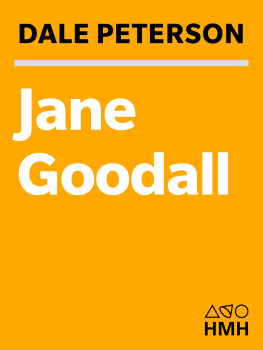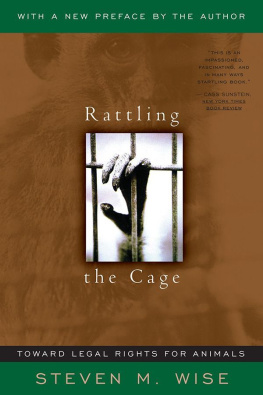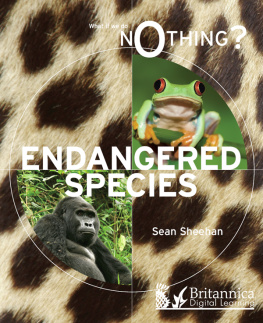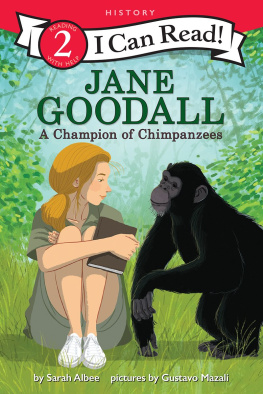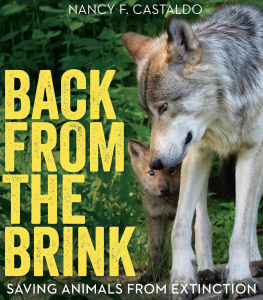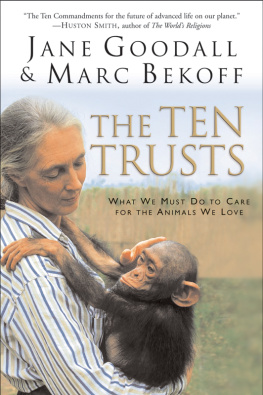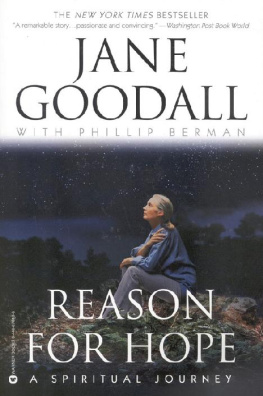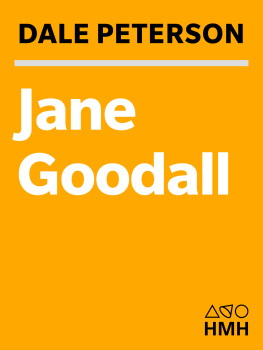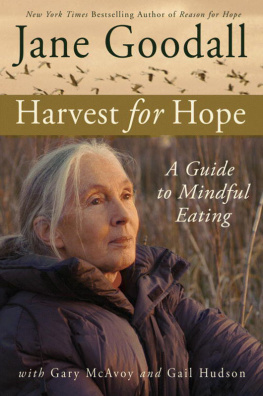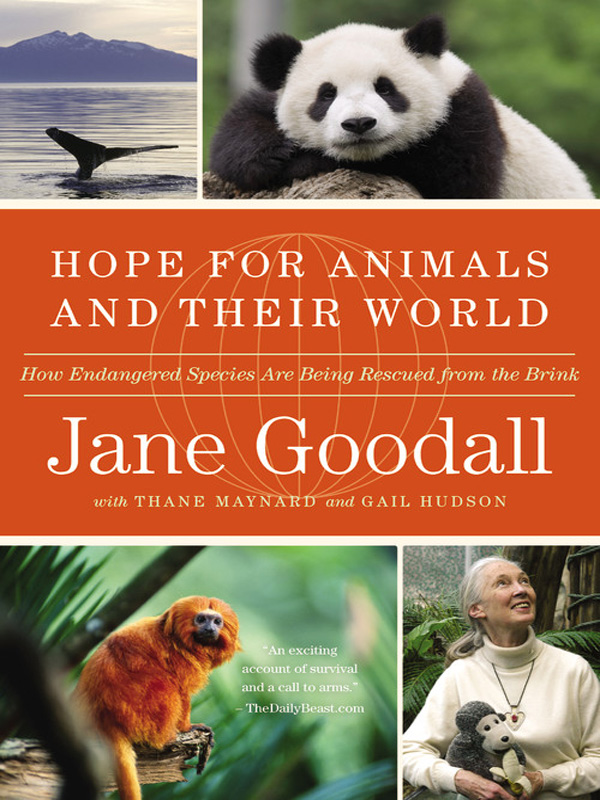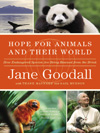
Copyright 2009 by Jane Goodall with Thane Maynard and Gail Hudson
Epilogue Copyright 2011 by Jane Goodall with Thane Maynard and Gail Hudson
Reading Group Guide Copyright 2011 by Hachette Book Group
All rights reserved. Except as permitted under the U.S. Copyright Act of 1976, no part of this publication may be reproduced, distributed, or transmitted in any form or by any means, or stored in a database or retrieval system, without the prior written permission of the publisher.
Grand Central Publishing
Hachette Book Group
237 Park Avenue
New York, NY 10017
Visit our website at www.HachetteBookGroup.com.
www.twitter.com/grandcentralpub.
Grand Central Publishing is a division of Hachette Book Group, Inc.
The Grand Central Publishing name and logo is a trademark of Hachette Book Group, Inc.
The publisher is not responsible for websites (or their content) that are not owned by the publisher.
Second eBook Edition: June 2011
ISBN: 978-0-446-54338-5
What I found so enchanting about [the] book is that its full of people like [her] keepers of the planet.
Bill Moyers
Moving For Goodall, both hubris and tragedy reside in the fact that extinctions are being allowed to happen. The question is: What to do about it? In her book, theres a take-home response.
CSMonitor.com (Christian Science Monitor)
A testament of hope, an inspirational call to transcend our history of ignorance and neglect and to move in the direction of communal good will on behalf of nature. It illustrates through vivid, heroic examples how humankinds fundamental impulse to heal has already saved dozens of species from the brink of extinction.
Austin American-Statesman
The good news is, to break the doom-and-gloom cycle of cynicism, we have Dr. Jane Goodall to offer a remarkably optimistic point of view in her book Its a you can do it ecological pep talk.
Boston Phoenix
Goodall is no Pollyanna about species reclamation but these accounts of conservation success are inspirational.
Publishers Weekly
Renowned scientist Jane Goodall brings us inspiring news as well as fascinating survival stories.
More
Despite dire warnings for our endangered planet, Jane Goodall says all is not yet lost and she should know. Her tough-minded optimism comes from her work as the worlds foremost authority on chimpanzees she has become a global advocate for all life HOPE FOR ANIMALS AND THEIR WORLD features the heroic work of men and women working around the world to protect and preserve the Earth.
Bill Moyers Journal
Jane Goodall needs no introduction [the] wonderful, difficult, and yet finally heartening careers researchers have had are revealed in these stories of endangered species that have been rescued Goodalls intimate writing style and sense of wonder pull the reader into each account.
Booklist
A pioneer, a genius She is an unconventional scientist but her mind and heart have collaborated on one of the most admirable careers of the twentieth century.
Stranger magazine (WA)
These stories could galvanize even the most cosseted animal lover to action.
BookPage
Offers a renewed optimism about animals, humans, and our future together.
Vegetarian Times
A heartening collection of conservation success stories offers good news about the environment with warmth and good humor An upbeat compendium that will energize both hands-on and armchair conservationists.
Kirkus Reviews
This book is dedicated to the memory of Martha, the last passenger pigeonand to the last Miss Waldrons colobus and the last Yangtze River dolphin. As we think of their lonely end, may we be inspired to work harder to prevent others suffering a similar fate.
T his book was several years in the making, and it could not have been written without the help of many people. Indeed, one of the really great experiences for me during the past few years has been meeting so many extraordinary and dedicated scientists and conservationists. Between them they have accomplished so much, and I have been overwhelmed by their willingness to share their knowledge and to read, correct, and add to the accounts I had written about their projects. Such generosity. I cannot thank them enough.
While writing this book I learned about many wonderful projects from around the world. Unfortunately, when they were all written up, it was obvious that the manuscript was too long. Even when each story was cut, and cut again, the book was still too long. After much agonizing, it was decided that the only thing we could do was remove whole sections. I still feel devastated that this had to be done, mostly because the people whose projects I was writing about had spent so much time reading their chapters and ensuring that the information was correctand they were so pleased that the material would be included in the book. I know they will be disappointed and I feel terrible about it.
Our Web Site: However, there is a silver lining. The publishers agreed to create a Web site which features all this material (janegoodallhopeforanimals.com). It also includes the original versions of some chapters that were shortened for the book, as well as many photographs we gathered. I encourage everyone to visit the Web site and learn about the wonderful projects described there. You will also find my complete acknowledgments that had to be condensed for this book.
As I said, without the help and ongoing cooperation of the people profiled in these pages, this book would never have been possible. You will find their names and heroic stories in the chapters to come. I would also like to thank the following people, who helped us tremendously but whose names you wont find in the pages ahead: Mark Bain (short-nosed sturgeon), Ann M. Burke (whooping crane), Phil Bishop (Hamilton frog), Pat Bowles (Caspian horse), Jane Chandler (whooping crane), Glenn Fraser (woodhen), Rod Gritten (glutinous snail), Nancy Haley (short-nosed sturgeon), Kirk Hart (short-tailed albatross), Diane Hendry (red wolf), Dave Jarvis (pedder galaxias), Tom Koerner and Dan Miller (trumpeter swan), Bill Lautenbach (Sudbury, Ontario), Alfonso Aguirre Muoz (Guadalupe Island), Mark Stanley Price (Arabian oryx), Ken Reininger (nene), Ruth Shea (trumpeter swan), Amy Sprunger (moapa dace), John Thorbjarnarson (Chinese alligator), Mike Wallace (California condor), Jake Wickerham (pedder galaxias), and Stephen S. Young (Cao Hai Nature Reserve).
I am really grateful to Don Merton. He has helped us with so many chapters in this book: The utterly fascinating story of the kakapo, New Zealands large flightless parrot, will appear on our Web site. And I thank Nicholas Carlile for his enormous help in reviewing several of the stories in this book. His contribution to rescuing the Goulds petrel will also appear on our Web site.
The following people provided me with information about heroic efforts to save our endangered plant species: Peter Raven, Hugh Bollinger, Nick Johnson, Lourdes Lulu Rico Arce, Michael Park, Tim Rich, Bill Brumback, Jo Meyerkord, Kathryn Kennedy, and Robin Wall Kimmerer. You will find their stories and contributions on our Web site. In particular, Victoria Wilman and Robert Robichaux sent me so much helpful information, as did Paul Scannell and Andrew Pritchard, who also met with me in Australia.


